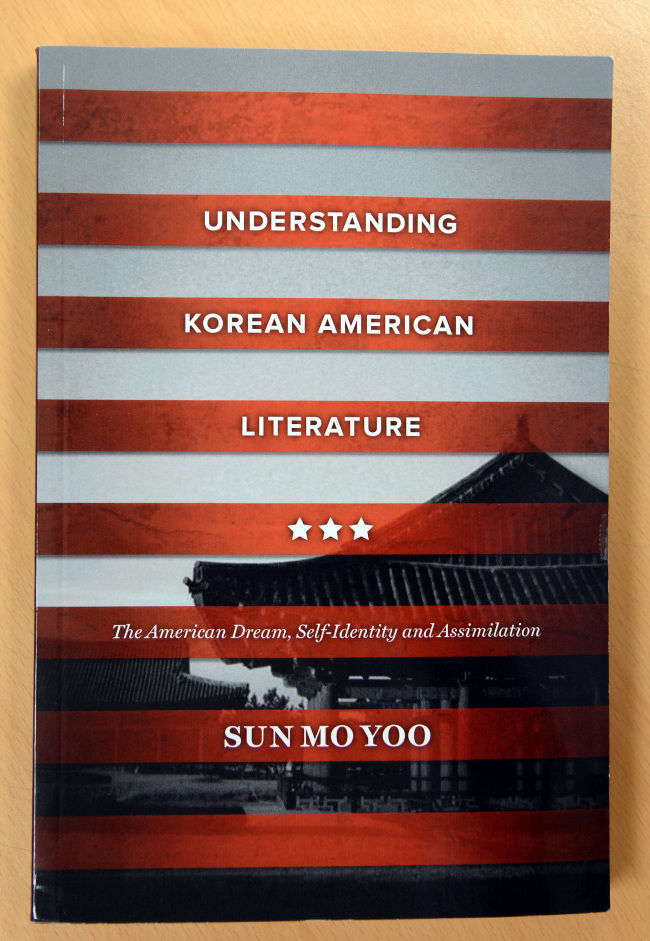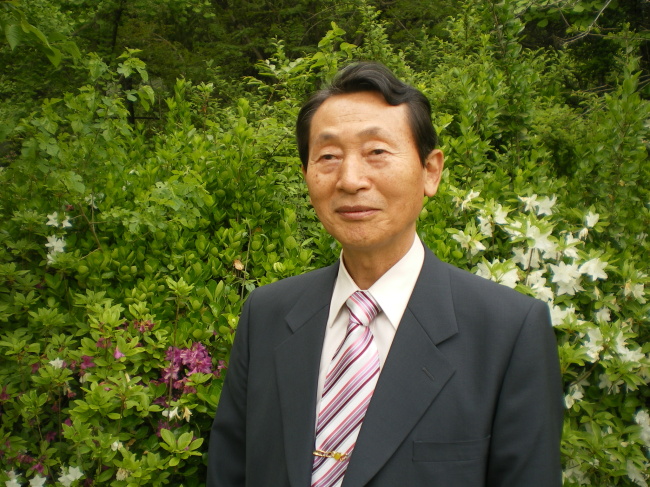While literary works by Korean writers such as Shin Kyung-sook and Kim Young-ha are rising to prominence overseas, especially in the U.S., a scholar’s latest book focuses on something similar yet different: the works of literature produced by Korean immigrants in America and their descendants.
A meaningful scholarly achievement in Korean Diaspora studies, the book explores the lives of Korean-American writers and their often multi-layered and autobiographical works.
 |
“Understanding Korean American Literature” by Yoo Sun-mo. (Ahn Hoon/The Korea Herald) |
The book, titled “Understanding Korean-American Literature,” is a result of Yoo Sun-mo’s 10 years of research that began in 1996, and includes interviews with some of the most prominent Korean-American writers including Chang-rae Lee, Helie Lee, Susan Choi and Mira Stout.
“I began my research because I saw the bright potential of ethnic literature in America,” Yoo writes in the book.
“As the 1990s approached, new writing blossomed from ethnic writers at the same time as a lack of new, interesting work from mainstream American writers. Toni Morrison won the Nobel Prize for literature, which inspired other ethnic writers.”
 |
Yoo Sun-mo recently published “Understanding Korean American Literature.” (Yoo Sun-mo) |
Yoo categorizes the writers into four generations: the first generation, which includes Connie Kang (1943- ) and Soh Jae-pil (1866-1951); the 1.5 trans-generation, such as Helie Lee (1965- ), Chang-rae Lee (1965- ); the second generation, including Mira Stout (1960- ); and third-generation authors such as Don Lee (1960- ) and Cathy Song (1946- ).
Yoo argues that the first Korean writer to have published a novella in the English language was Seo Jae-pil, or Philip Jaisohn, the journalist, independence activist and the first Korean to become a naturalized citizen of the U.S. According to Yoo, Seo published an autobiographical novel titled “Hansu’s Journey” in three installments under his pen name N. H Osia in 1921. The work appeared in Korea Review, which was Seo’s own publication serving the cause of Joseon’s independence from Japanese colonial rule.
Yoo also writes briefly about each writer’s life, especially their family history, on top of their novels that often and inevitably deal with the themes of the American dream, identity, alienation and cultural and social assimilation.
Many readers will find their lives intriguing, as much as their works, as they are filled with resilience and adventures. Connie Kang, for one, is the first Korean-American female journalist. She moved to the U.S. from Seoul at the age of 18, and joined the Los Angeles Times in 1964 after attending University of Missouri and Northwestern University.
Chang-rae Lee, on the other hand, is a former Wall Street financial analyst who won the prestigious PEN/Hemingway Award for his 1995 debut novel “Native Speaker” featuring a Korean-American man as the protagonist. Lee moved to the U.S. from Korea at the age of 3.
“I think they are both important. Without social assimilation, you are always on the outside, and when you are on the outside and situated as such, people treat you differently,” author Lee tells Yoo in the book, when asked about his thoughts on maintaining his Korean identity and assimilating into American culture.
“On the other hand, when you don’t have the threads of cultural identity ― and in America cultural identity means two things: one, being from a native country and being a native of another country in some sense; America is an immigrant country ― without that kind of heritage and identity and identification, I don’t think that you can be a whole person. I don’t think that you can actually be someone who has a sense of family and be a valuable member of society.”
One of the most notable achievements of the book is, arguably, Yoo’s interviews with the writers. Readers get to read the transcripts of the interviews, in which the authors speak frankly about some of the themes that dominated their works and real-life experiences. They offer a rare glimpse into what has shaped the complex Korean-American identity ever since the first Korean immigrants arrived at the sugarcane fields of Hawaii in 1903.
“I think it’s sort of immigrants’ dream,” said author Mira Stout, who was born to an Irish father and a Korean mother, sculptor and violinist Koh Chae-won. Yoo categorizes Stout as a second generation author.
“You know, the dream of a mythical, better life, work hard, good education, you get rich. It’s kind of a nice, healthy dream, but I don’t know for me. It’s not what I feel, or identify with myself. I think it’s the dream of people who have not had freedom where they come from.”
Yoo said while first generation writers mostly wrote about their Korean identity and their experience during the Japanese colonial period and the Korean War, the 1.5 generation authors ― Chang-rae Lee, Connie Kang ― sought to assimilate into the mainstream American society. Interestingly, according to Yoo, a number of second generation authors who were born in the U.S. to Korean immigrant parents ― such as Richard S. Hahn, Leonard W. Chang, and Marie G. Lee ― asserted that assimilation to the American culture is nearly impossible.
“Both of my siblings are uninterested in Korea, don’t speak Korean, don’t eat Korean food, and I think that’s fine: that’s what American is all about, you can be whatever you want to be, self-invent yourself,” Marie. G. Lee (1964- ), a second generation author, tells Yoo.
“I was also uninterested in Korean culture for a time, but as I grew older and achieved my self-knowledge, I realized that many white Americans would never consider me 100 percent American, even though I was.”
The third-generation authors, on the other hand, have a tendency of selecting themes that go beyond keeping one’s Korean identity and assimilation to the U.S.
“I hope in the coming years that Korean-American writers are able to transcend their ethnicity as their defining labels,” author Don Lee (1960- ), a third generation writer, tells Yoo in the book.
“I liken our current status to writers like Bernard Malamud and Philip Roth in the sixties. They were identified firstly as Jewish writers. Now, however, they are writers who are American, and incidentally Jewish. I’d like to see the same thing happen with Korean-American writers.”
By Claire Lee (
dyc@heraldcorp.com)





![[Herald Interview] 'Trump will use tariffs as first line of defense for American manufacturing'](http://res.heraldm.com/phpwas/restmb_idxmake.php?idx=644&simg=/content/image/2024/11/26/20241126050017_0.jpg)

![[Health and care] Getting cancer young: Why cancer isn’t just an older person’s battle](http://res.heraldm.com/phpwas/restmb_idxmake.php?idx=644&simg=/content/image/2024/11/26/20241126050043_0.jpg)

